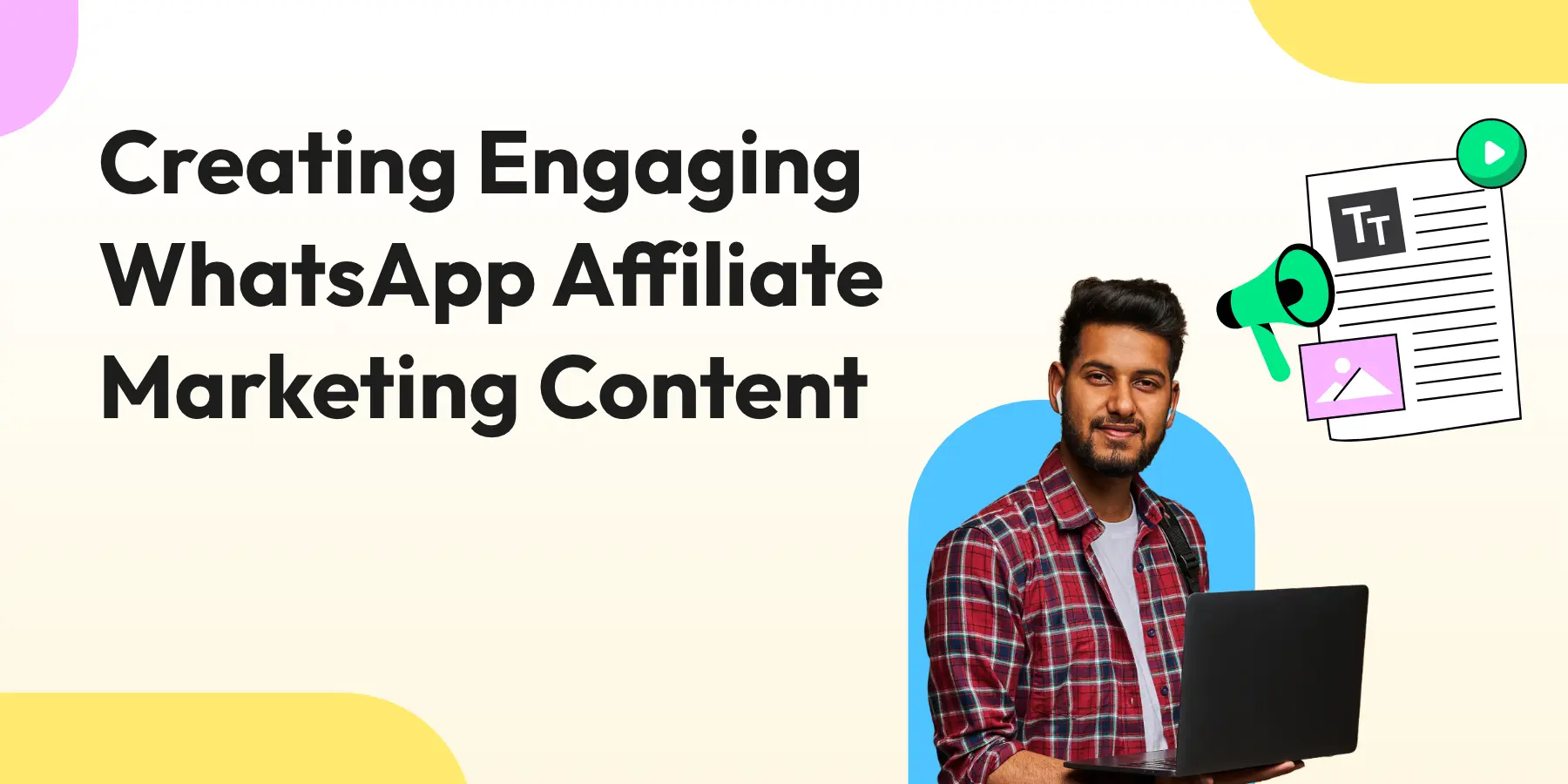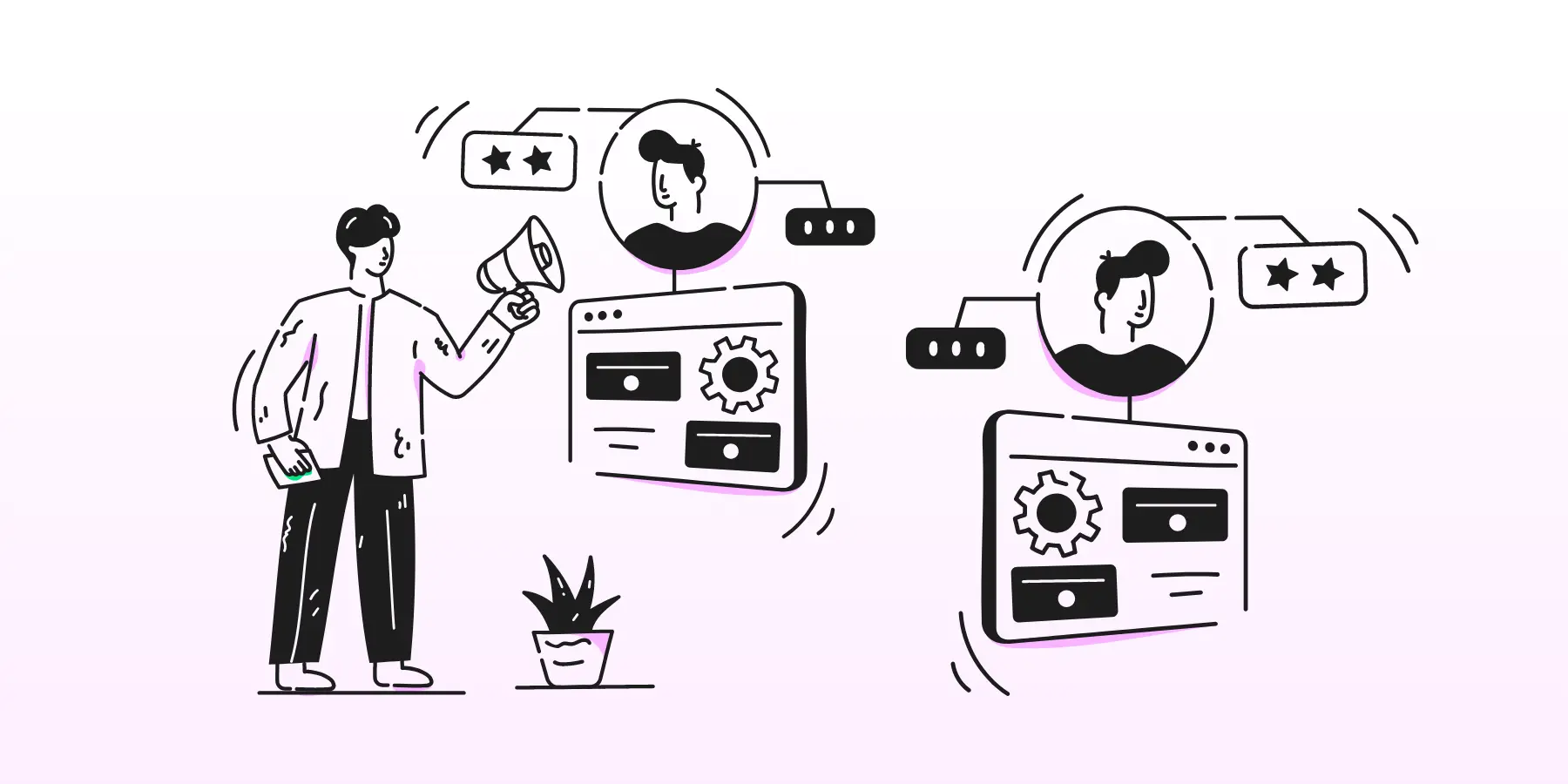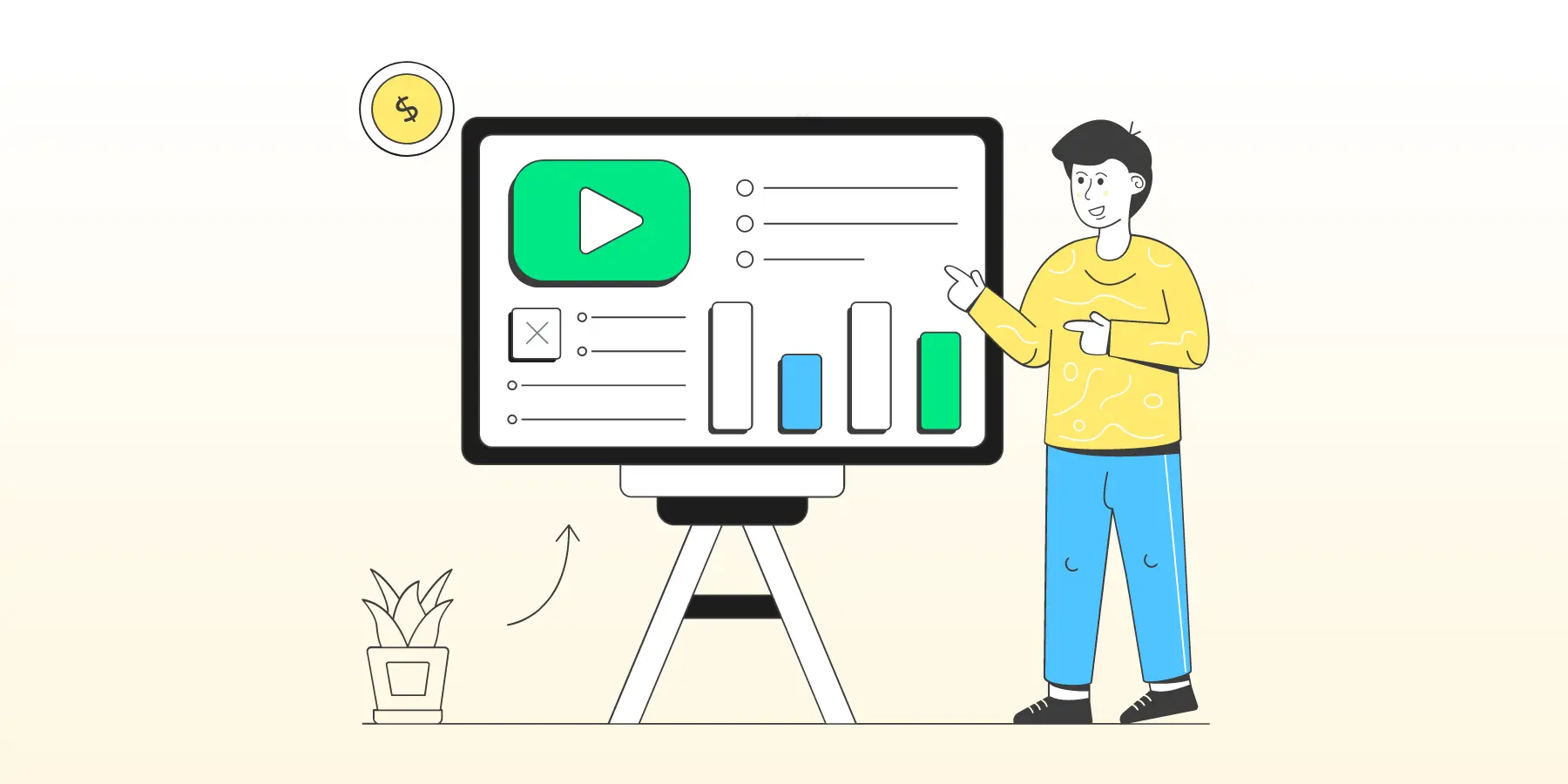
Creating Engaging WhatsApp Affiliate Marketing Content
Affiliate marketing has become a cornerstone of digital marketing strategies for businesses of all sizes. One platform that is often overlooked but has immense potential is WhatsApp. With over 2 billion users worldwide, WhatsApp offers a unique opportunity to create engaging affiliate marketing content.
This blog will explore how to leverage WhatsApp effectively for affiliate marketing, covering everything from crafting captivating content to measuring success.
Benefits of Using WhatsApp for Promoting Affiliate Marketing Content
Using WhatsApp for promoting affiliate marketing content offers several benefits, making it a valuable tool for marketers. Here are some key advantages:
- Wide Reach and High Engagement:
- WhatsApp has a vast user base with over 2.8 billion active users worldwide. – Statista
- Messages sent on WhatsApp have a high open rate, often exceeding 90%, ensuring that your content is seen by a large audience.
- Instant Messaging:
- WhatsApp delivers messages instantly, making it ideal for time-sensitive promotions or updates.
- Real-time communication can help in addressing customer queries and concerns promptly, improving customer satisfaction.

- Rich Media Support:
- You can share various types of content, including text, images, videos, voice messages, and documents.
- Engaging multimedia content can capture attention more effectively than plain text, enhancing the impact of your marketing efforts.
- Broadcast Lists:
- You can create a broadcast list to segment your audience based on interests, behaviour, or demographics.
- Group messaging allows for targeted promotions and discussions, fostering a sense of community among your audience.

- Low Cost:
- WhatsApp is a cost-effective marketing tool as it uses internet data rather than traditional SMS.
- It’s an affordable option for reaching a global audience without incurring high costs.
- End-to-End Encryption:
- WhatsApp ensures secure communication with end-to-end encryption, protecting the privacy of both marketers and customers.
- This WhatsApp security feature can help in gaining the trust of your audience, especially when dealing with sensitive information.
- High Conversion Rates:
- The direct and personal nature of WhatsApp communication often leads to higher engagement and conversion rates compared to other platforms.
- By leveraging the interactive features of WhatsApp, you can guide potential customers through the sales funnel more effectively.
Read more about How to Get Started with Affiliate Marketing in 2025.
Crafting Captivating Content
Creating engaging affiliate marketing content on WhatsApp requires a strategic approach. Here are the key steps:
Identifying Your Target Audience
Before you start crafting your messages, identifying your target audience is a crucial step in any marketing strategy, including affiliate marketing. Understanding who your audience is helps in creating tailored content and promotions that resonate with them. Here are the steps to identify your target audience:
- Analyze Your Current Customers
- Look at who is currently buying your products or services. Identify common characteristics and demographics such as age, gender, location, and purchasing behaviour.
- Use customer feedback and reviews to understand their needs, preferences, and pain points.
- Create Customer Profiles:

- Develop detailed customer personas representing different segments of your audience. Include information such as demographics, interests, lifestyle, buying behaviour, and challenges they face.
- Use these personas to guide your marketing strategies and content creation.
- Competitor Analysis:
- Study your competitors to see who they are targeting. Analyze their marketing strategies and customer interactions to gain insights into potential audience segments.
- Industry Trends and Reports:
- Utilize industry reports and market research studies to identify trends and shifts in your market.
- Pay attention to emerging demographics or niches that might be relevant to your products or services.
- Website Analytics:
- Use tools like Google Analytics to gather data on your website visitors. Look at metrics such as age, gender, location, interests, and behaviour on your site.
- Analyze which pages get the most traffic and what type of content engages visitors the most.
- Social Media Insights:
- Platforms like Facebook, Instagram, and Twitter offer analytics that can provide insights into the demographics and interests of your followers.
- Track engagement metrics to see which types of posts resonate most with your audience.
- Segmentation
- Segment your audience based on demographics such as age, gender, income, education, and occupation.
- Consider psychological traits such as lifestyle, values, interests, and attitudes.
- Segment based on behaviour such as purchasing habits, brand loyalty, user status, and usage rate.

Creating Compelling Messages
Your messages should be concise, clear, and compelling. Here are some tips to achieve this:
- Value Proposition:
- Start with a headline that captures attention and communicates the primary benefit.
- Follow with a brief description that explains how your product or service fulfils customer needs and why it’s superior to alternatives.
- Clarity and Simplicity:

- Your value proposition should be clear and easy to understand. Avoid using jargon or overly complex language.
- Clearly state what your product or service does and the primary benefit it offers.
- Urgency and Scarcity:
- Create a sense of urgency by highlighting limited-time offers or limited availability to prompt immediate action.
Incorporating Visual Elements
Incorporating visual elements effectively can significantly enhance your affiliate marketing efforts, making your content more engaging and memorable. Here are some key ways to incorporate visuals into your marketing strategy:
- High-Quality Images and Graphics
- Product Images: Use high-resolution images that showcase the product or service you are promoting. Ensure the images are clear and visually appealing.
- Infographics: Create infographics to explain complex information or data in a visually appealing format. Infographics are great for summarizing key points or comparisons.
- Charts and Graphs: Visualize statistics, trends, or results using charts and graphs. They can make data easier to understand and more compelling.
- Videos
- Product Demonstrations: Create videos demonstrating how the product works or its benefits. Show real-world use cases to help potential customers visualize themselves using the product.

- Tutorials and How-To Guides: Produce tutorial videos that provide valuable information or teach skills related to your niche. This positions you as an authority and builds trust with your audience.
- Interactive Content
- Quizzes and Polls: Create interactive quizzes or polls related to your affiliate products. They encourage engagement and provide valuable insights into your audience’s preferences.
- Interactive Infographics: Develop infographics that allow users to interact with different elements, such as clicking to reveal more information or navigating through sections.
Adding Personalization
Personalized messages can make your audience feel valued and increase engagement.
| Personalized Content | Customized Emails: Address customers by their name and personalize the content based on their interests or recent interactions with your site. |
| Dynamic Content: Use dynamic content blocks on your website or in emails to show personalized recommendations, offers, or messages based on user behaviour. | |
| Tailored Messaging | Behavioural Triggers: Send automated messages triggered by specific actions, such as abandoned cart reminders, product recommendations, or special offers based on recent purchases. |
| Event-Based Messaging: Send personalized messages on special occasions like birthdays or anniversaries, offering discounts or special gifts. | |
| Personal Touch | Personalized Customer Service: Provide personalized support and assistance, addressing customers by name and remembering their preferences or past interactions. |
| Follow-Up Communication: Follow up with customers after a purchase to ensure satisfaction and offer personalized recommendations for related products or services. |
Check out Debunking Myths of Affiliate Marketing.
Effective Messaging Strategies
To maximize the impact of your affiliate marketing content, implement the following strategies:
Timing Your Messages
Timing your messages effectively can significantly impact their effectiveness in affiliate marketing. Here are some considerations for timing your messages to maximize engagement and conversions:
- Understand Your Audience’s Behavior
- Analytics and Insights: Use data from analytics tools to understand when your audience is most active and responsive.
- Customer Insights: Analyze past interactions and purchase patterns to identify optimal times for reaching out.
- Consider Time Zones
- Global Audience: If your audience spans different time zones, schedule messages to reach them during their peak activity hours.

- Localized Timing: Tailor timing based on specific regions or markets to ensure relevance and effectiveness.
- Day of the Week
- Weekday vs. Weekend: Consider whether your audience is more responsive during weekdays or weekends.
- Industry Norms: Research industry norms to see if there are specific days known for higher engagement or sales.
- Time of Day
- Morning vs. Afternoon vs. Evening: Test different times of day to see when your audience is most likely to engage.
- Contextual Relevance: Consider the nature of your message and when it would be most relevant or impactful for recipients.
- Event-Based Timing
- Seasonal Campaigns: Align messages with seasonal events, holidays, or sales periods that are relevant to your niche.
- Promotional Periods: Launch campaigns or promotions at times when consumers are more inclined to make purchasing decisions (e.g., before holidays or special events).
By carefully timing your messages based on audience behaviour, geographical considerations, and contextual relevance, you can increase the likelihood of your affiliate marketing efforts being noticed, engaged with, and ultimately leading to conversions.

Call-to-Actions (CTAs)
Call-to-actions (CTAs) are crucial elements in affiliate marketing messages that prompt users to take a specific action, such as making a purchase, signing up for a newsletter, or clicking through to a landing page. Here’s how to create effective CTAs:
- Clear and Direct:
- Clarity: Clearly state what action you want the user to take. Use straightforward language that leaves no room for confusion.
- Directness: Use strong, action-oriented verbs that encourage immediate response (e.g., “Buy Now,” “Shop Here,” “Subscribe Today”).
- Create Urgency:
- Time Sensitivity: Incorporate words or phrases that create a sense of urgency, encouraging users to act quickly (e.g., “Limited Time Offer,” “Act Now,” “Offer Ends Soon”).
- Scarcity: Highlight limited availability or scarcity of products/services to motivate users to take action before missing out.

- Offer Value
- Benefits-Oriented: Communicate the benefits or rewards users will receive by clicking the CTA (e.g., “Unlock Exclusive Access,” “Get 20% Off Your First Order”).
- Incentives: Provide incentives such as discounts, free trials, or special offers to encourage immediate action.
- Design and Placement
- Visibility: Make sure your CTA stands out visually. Use contrasting colours, bold fonts, or buttons to draw attention.
- Placement: Position CTAs strategically within your content, such as at the end of a product description, in email signatures, or prominently on landing pages.
By crafting compelling CTAs that are clear, urgent, and aligned with audience needs, you can effectively guide users towards taking desired actions and achieve better results in your affiliate marketing campaigns. Regularly reviewing and optimizing your CTAs based on performance data ensures that they remain effective and relevant to your audience over time.
Using Storytelling Techniques
Storytelling is a powerful technique in affiliate marketing that can captivate your audience, evoke emotions, and ultimately drive engagement and conversions. Here’s how you can effectively use storytelling techniques in your affiliate marketing efforts:
- Establish a Connection
- Relatable Characters: Introduce characters or personas that your audience can relate to, such as a customer-facing a common problem or seeking a specific solution.
- Identify with Pain Points: Highlight challenges or pain points that resonate with your audience’s experiences or aspirations.
- Outline the Problem
- Set the Scene: Describe the situation or problem your character is facing in a way that draws empathy and understanding from your audience.
- Create Tension: Build anticipation and curiosity around how the problem will be resolved or alleviated.

- Introduce Your Solution
- Highlight Benefits: Introduce your affiliate product or service as the solution to the problem presented in your story.
- Showcase Features: Explain how the features of your offering directly address the challenges faced by your character.
- Emotional Appeal: Appeal to emotions such as joy, relief, or satisfaction that your audience would feel when using your product or service.
By weaving storytelling into your affiliate marketing content, you can create a deeper emotional connection with your audience, making your messages more memorable and persuasive.
Leveraging WhatsApp Features
WhatsApp offers various features that can enhance your affiliate marketing efforts.
Utilizing WhatsApp Status
Using WhatsApp Status effectively in affiliate marketing can help you reach a large audience and engage them with your content. Here are some strategies to utilize WhatsApp Status for affiliate marketing:
- Regular Updates:
- Share regular updates about new products, offers, and promotions.
- Share short videos demonstrating how to use or benefit from the affiliate products you are promoting.
- Visual Content:
- Use images, videos, and GIFs to make your status updates more engaging.
- Use WhatsApp Status to announce exclusive discounts, flash sales, or special promotions through your affiliate links.
- Interactive Elements: Interactive Content:
- Use WhatsApp Status to create images of polls or questions to engage your audience. Ask them about their preferences, needs, or feedback related to your affiliate niche.
- Gather valuable insights from your audience’s responses to tailor your affiliate marketing strategies.
- Provide Value through Tips and Advice
- Educational Content: Share useful tips, advice, or industry insights related to your affiliate products. Position yourself as a knowledgeable authority in your niche.
- How-To Guides: Create step-by-step guides or tutorials demonstrating the benefits or uses of your recommended products.
Using WhatsApp Groups
Using WhatsApp groups for affiliate marketing can be an effective strategy to engage with a targeted audience, share valuable content, and promote affiliate products or services. Here’s how you can utilize WhatsApp groups for affiliate marketing:
- Segmented Groups:
- Niche-Specific: Create or join WhatsApp groups that are relevant to your affiliate niche. This ensures that your content reaches users who are genuinely interested in your offerings.
- Segmentation: Consider creating multiple groups based on different segments of your audience to tailor your messages and offers accordingly.
- Engagement Activities:
- Interactive Discussions: Encourage discussions and interactions among group members. Ask questions, seek feedback, or conduct polls related to your niche.
- Respond Promptly: Monitor the group regularly and respond promptly to inquiries or comments from group members. Engage in meaningful conversations to build rapport.
- Promote Without Spamming
- Subtle Promotion: Share affiliate links or product recommendations naturally within the context of discussions or when relevant to group members’ needs.
- Avoid Over-Promotion: Balance promotional content with valuable, non-promotional posts to maintain group engagement and avoid spamming.
- Exclusive Content: Share exclusive content and offers with your groups to make them feel valued.
- Build Trust and Credibility
- Share Reviews and Testimonials: Highlight positive reviews or testimonials from satisfied customers who have used the products/services you are promoting.

- Transparency: Be transparent about your affiliate relationships and focus on recommending products that genuinely benefit group members.
Remember to prioritize providing value to group members while subtly integrating affiliate promotions to maximize engagement and conversions.
Automating with WhatsApp Business API
Automating with WhatsApp Business API using platforms like Wati can streamline your affiliate marketing efforts by enabling automated messaging and interactions with customers on WhatsApp. Here’s how you can leverage Wati and WhatsApp Business API for affiliate marketing automation:
- Integration and Setup
- Connect WhatsApp Business API: Integrate your WhatsApp Business account with Wati to access automation features. This typically involves setting up the API with your business number.
- Account Configuration: Set up your business profile, including your business name, description, and logo, to establish a professional presence on WhatsApp.
- Automated Messaging
- Welcome Messages: Set up automated welcome messages to greet new contacts who message your business for the first time. Use this opportunity to introduce your affiliate offerings or provide useful information.
- Transactional Messages: Automate messages for order confirmations, shipping updates, or other transactional notifications related to affiliate sales.
- Campaign Management
- Broadcast Messages: Schedule and send broadcast messages to your subscriber list. Use these messages to announce promotions, new products, or exclusive offers available through your affiliate links.
- Segmentation: Segment your audience based on preferences, behaviours, or demographics to send targeted campaigns that resonate with specific groups.
- Customer Support Automation
- FAQ Responses: Set up automated responses for frequently asked questions related to your affiliate products or services. Provide instant answers to common queries.
- Issue Resolution: Automate the handling of customer inquiries and issues through predefined responses or routing to live support if necessary.
- Lead Generation and Follow-Up
- Opt-In Forms: Use Wati’s features to create opt-in forms for users to subscribe to updates or promotions via WhatsApp. Collect leads and follow up with automated messages.
- Lead Nurturing: Implement automated drip campaigns to nurture leads over time, sharing valuable content and gradually introducing affiliate offers.
- Analytics and Reporting
- Performance Tracking: Monitor campaign performance, including message delivery rates, open rates, and click-through rates. Use analytics to optimize your messaging strategy.
- Conversion Tracking: Track conversions driven by your WhatsApp campaigns using Wati’s reporting tools. Measure the effectiveness of affiliate links shared through automated messages.
- Compliance and Best Practices
- WhatsApp Policies: Adhere to WhatsApp’s policies and guidelines for business messaging, including opt-in requirements and message frequency limits.
- Personalization: Despite automation, personalize messages where possible to maintain a human touch and enhance engagement.
Read more about WhatsApp Affiliate Campaigns.
Measuring Success and Optimization
To ensure the effectiveness of your WhatsApp affiliate marketing efforts, it’s essential to measure success and continuously optimize your strategies.
Tracking Key Metrics
Identify and track key metrics to measure the performance of your campaigns.
- Open Rates: Measure the percentage of messages that are opened by your audience.
- Click-Through Rates (CTR): Track the percentage of recipients who click on the links in your messages.
- Conversion Rates: Measure the percentage of recipients who take the desired action, such as making a purchase or signing up for a service.
Check out 8 Essential Affiliate Marketing KPIs to track in 2025.
Analyzing Engagement
Analyze the engagement levels of your audience to understand what works and what doesn’t.
- Message Response Rates: Track the number of responses and interactions you receive from your messages.
- Engagement Patterns: Identify patterns in engagement, such as which types of content receive the most responses.
- Feedback Analysis: Collect and analyze feedback from your audience to improve your content and strategies.
Continuous Improvement
Use the insights gained from your analysis to continuously improve your WhatsApp affiliate marketing efforts.
- A/B Testing: Conduct A/B testing to compare different versions of your messages and identify what works best.
- Content Optimization: Optimize your content based on the feedback and engagement data to make it more effective.
- Strategy Refinement: Continuously refine your overall strategy based on the insights gained from your analysis.
Learn more about Promoting Your Affiliate Link.
Conclusion
WhatsApp offers a powerful platform for affiliate marketers to create engaging and effective marketing content. By understanding your audience, crafting compelling messages, leveraging WhatsApp features, and continuously measuring and optimizing your efforts, you can significantly enhance your affiliate marketing success on this platform. Start implementing these strategies today and unlock the full potential of WhatsApp for your affiliate marketing campaigns.
By following these guidelines and leveraging the power of WhatsApp, you can create highly effective affiliate marketing campaigns that drive engagement and conversions. Happy marketing!
Frequently Asked Questions
- Why is WhatsApp effective for affiliate marketing?
WhatsApp has a high engagement rate, supports rich media, and allows for direct and personal communication with your audience.
- How can I create engaging content for WhatsApp?
Identify your target audience, craft compelling messages, incorporate visual elements, and personalize your messages.
- What are the key WhatsApp features I should use for affiliate marketing?
Utilize WhatsApp Status, create segmented groups, and automate your messaging with the WhatsApp Business API.
- How do I measure the success of my WhatsApp affiliate marketing campaigns?
Track key metrics such as open rates, click-through rates, and conversion rates, and analyze engagement levels.
- How can I continuously improve my WhatsApp affiliate marketing efforts?
Conduct A/B testing, optimize your content based on feedback, and refine your overall strategy using the insights gained from your analysis.



Latest Comments